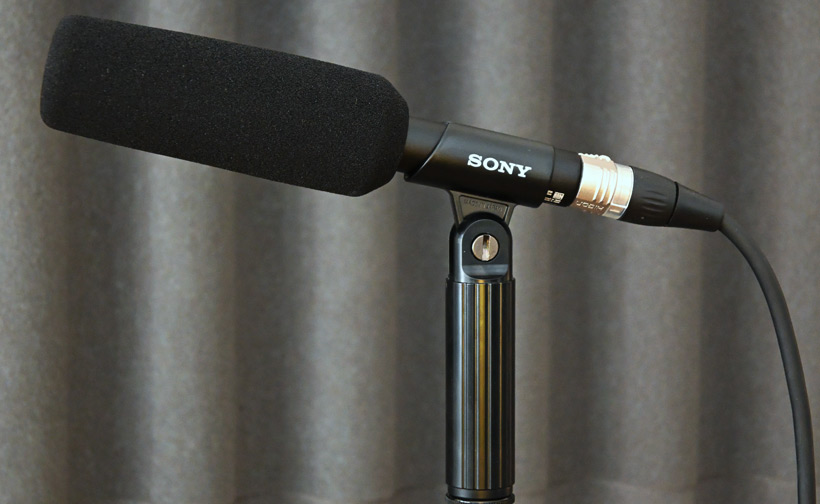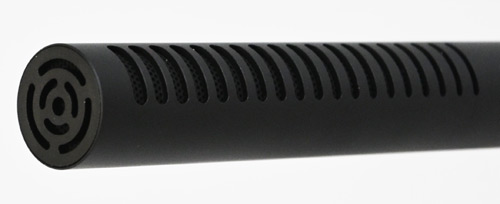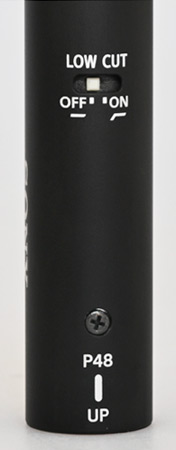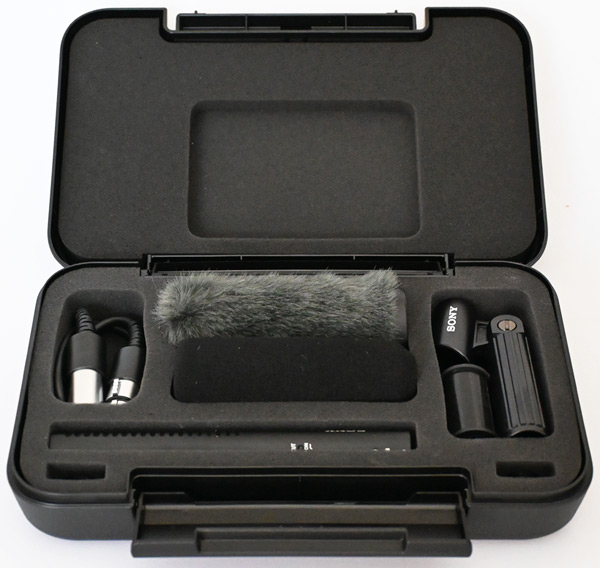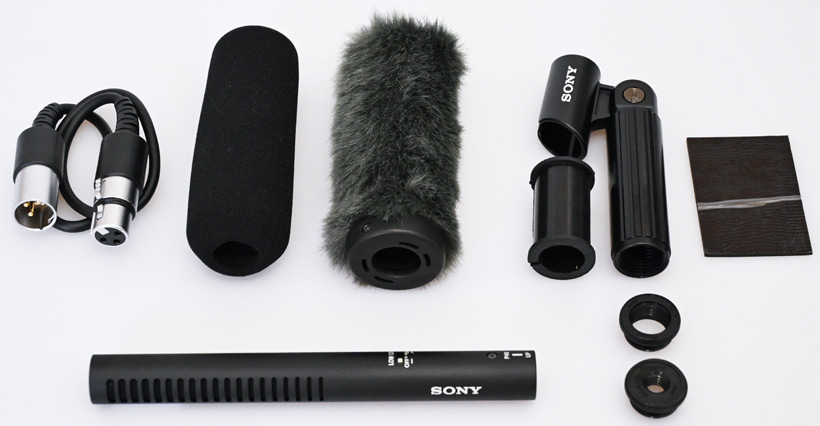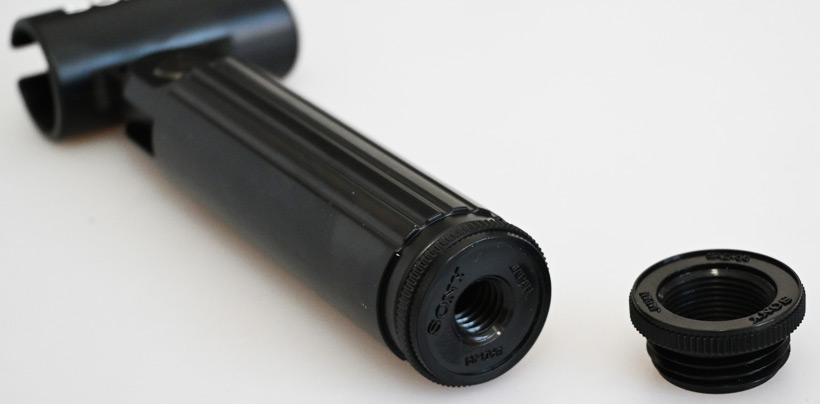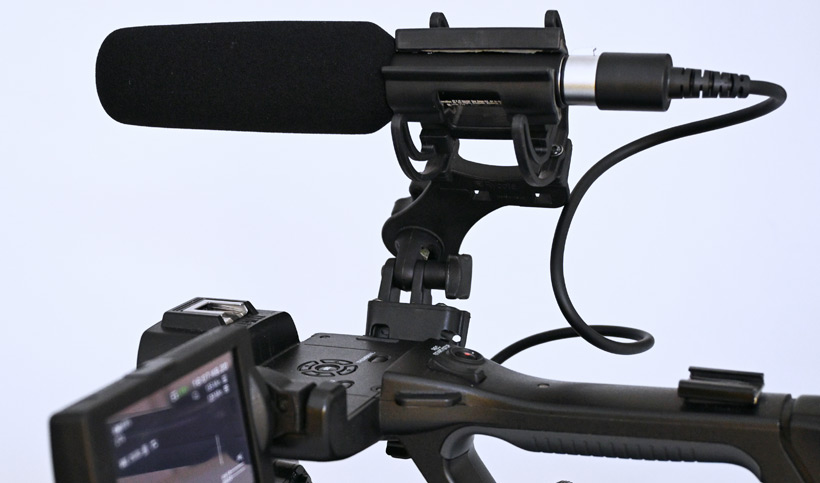Sony ECM-778
Compact shotgun microphone
Author and photos: Peter Kaminski
Sony offers a whole range of electret condenser shotgun microphones in its ECM series, such as the ECM-678, the shorter ECM-673, and the ECM-680S stereo shotgun microphone. In June 2025, Sony introduced the ECM-778, which we could test extensively a few weeks before its official launch.
Concept and technology
Shotgun microphones use microphone capsules based on the pressure gradient receiver principle with an interference tube. The interference tube with openings on the side increases directionality by canceling out lateral sound components via transit times. It sounds simple at first, but in practice, the overall tuning is not that easy, as the degree of cancelation is not the same for every angle and every frequency. The length of the interference tube is crucial for the directionality, as is the technical design and tuning. Here, the developers have considerable scope to influence not only directionality but also sound.
The ECM-778 has a diameter of 20mm and a length of 176mm (weight 102 grams) and the aluminum metal housing is painted black. Incidentally, the ECM-678 is significantly longer at 250mm. An electret capsule is used as the capsule. The microphone needs phantom power with an operating range of 44 to 52 volts, with a maximum operating current of a moderate 4mA.
Now we come to the first feature that sets it apart from other shotgun microphones as well as from the ECM-678: the frequency range is specified by the manufacturer as 40Hz to 40kHz. Sony has a whole range of so-called high-resolution microphones with an extended frequency range in its product range, such as the C-100 studio microphone or the EMC-100N and ECM-100U instrument microphones, which also feature Sony's “Hi-Res AUDIO” logo.
Sony specifies the microphone sensitivity as -31dB (referenced to 1V/Pa at 1kHz), the signal-to-noise ratio as 78dB (at 1kHz, A-weighted), the dynamic range as 117dB, and the maximum sound pressure level as 133dB SPL (1% THD @ 1 kHz). The output is balanced, and the audio signal is provided via an XLR-3 socket. The nominal output impedance is 40 ohms.
On the top, there is a switch for activating a high-pass filter. A switchable front attenuation has been omitted due to the high dynamic range.
Scope of delivery
The Sony ECM-778 is delivered in a plastic case with various accessories.
In addition to the microphone itself, an XLR-M/XLR-F cable (plugged in, approx. 50cm long) and a slide-on foam and fur windshield are included.
A plastic microphone holder, two adapters (SAD-34 and SAD-35) for different tripod thread diameters (1/4“ and 3/8”), a molded insert for elastic mounting, and a rubber spacer sheet with self-adhesive backing are also included.
In practice
The ECM-778 is very compact for a directional microphone, but it still fits very well with the windshield attached in the usual elastic holders for use on a news camera (see picture above | Sony Z150 with Rycote Softie Lyre Mount). The microphone itself makes a very robust impression. Instead of plastic adapters for the different microphone thread sizes, we would have preferred metal adapters.
Now to the sound. We compared the Sony ECM-778 with several other shotgun microphones. Compared to microphones of similar or slightly greater length, the ECM-778 had less room ambience, and the perceived distance was closer. We tested distances of up to three meters from the sound source. It was noticeable that the sound of the ECM-778 was more balanced, which was particularly audible in the bass range. It's actually unfair, but we also made a comparison recording with a shotgun microphone with a length of 395mm – more than twice as long as the ECM-778. The reverb was slightly greater with the ECM-778, but not nearly as high as expected, and the sound impression was even better with the ECM-778 in the bass range. A nearly 40 cm long shotgun microphone is not easy to mount on a camera without problems, so the ECM-778 would certainly be the preferred choice.
On the subject of high resolution. The practical significance of the extended frequency range is somewhat controversial, but if you are recording at a sample rate of 96kHz, then you should also use microphones that support an extended frequency range. From a physical point of view, it is clear that the reproduction of transients is more precise in terms of rise times over a wide frequency range.
Conclusion
The ECM-778 costs €1,100. The developers of the Sony ECM-778 have succeeded in designing a very compact directional microphone with high directivity while also ensuring a balanced sound that is not always a given with shotgun microphones. The differences to many other shotgun microphones become very clear when recording with background music. The microphone delivers a very detailed reproduction of transients. A truly interesting microphone for use in reporting or location recording.
 How to resolve AdBlock issue?
How to resolve AdBlock issue? 